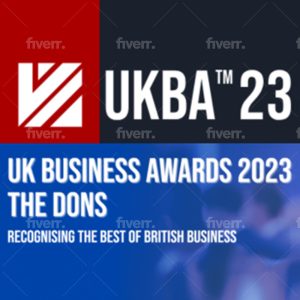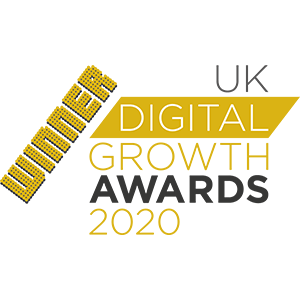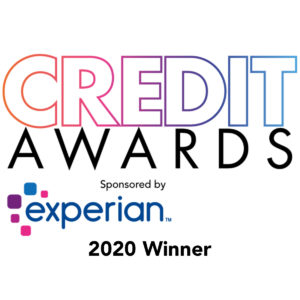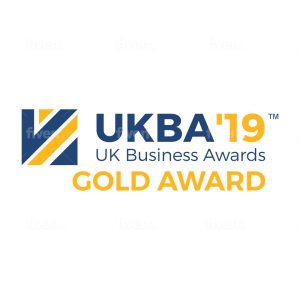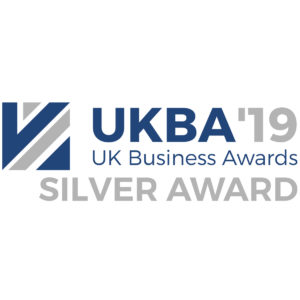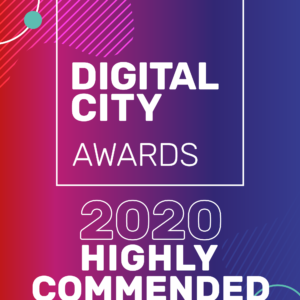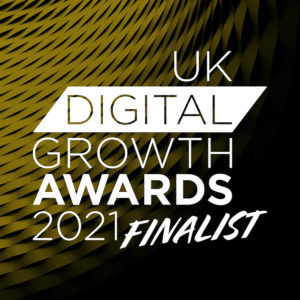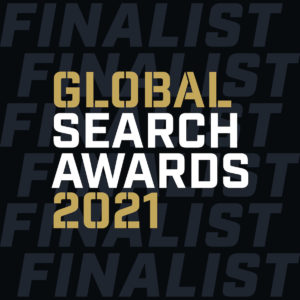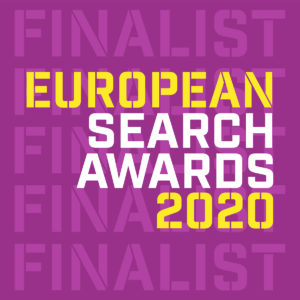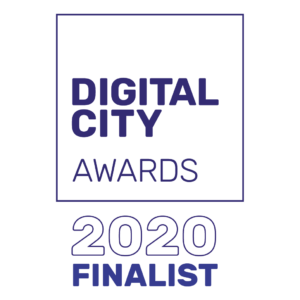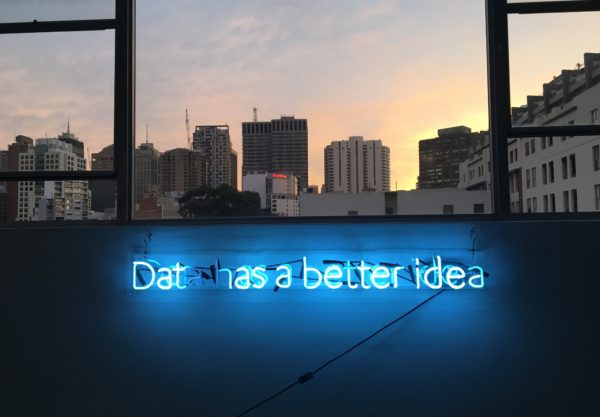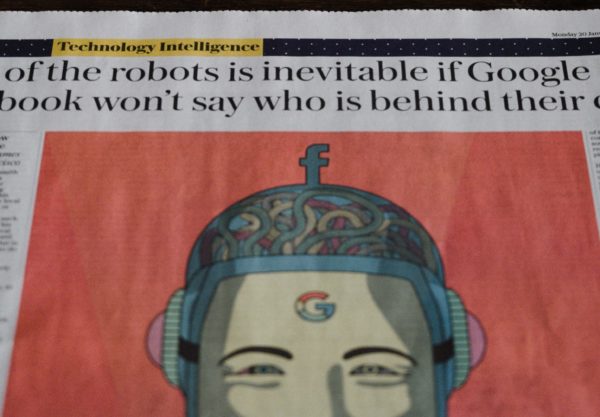This study investigated the factors influencing corporate identity perceptions by employees, and their commitment to brands. The results are based on a case study of a well-known international hotel brand that completed its re-branding process. The study focused on analyzing the information communicated through the company intranet and websites, an existing employee survey and eighteen in-depth interviews with employees at two hotels of the brand, managed by the same company. The two hotels are of different size, in different locations and have different operational challenges and structure. The hotel in London is the largest hotel of the brand within the UK and a flagship for the company. The second hotel is smaller and in a location outside London.
The study confirmed several findings by previous writers. First, a large corporate-organizational gap was found within the brand. Then, the study revealed multiple identities and sub-cultures within the brand at national, divisional, unit, departmental, sub-departmental, and sub-cultures within sub-cultures, which supports the idea that achieving a unitary corporate identity is virtually impossible. The study also found that strategy, corporate structure, leadership and shared values of employees/brand/hotel owners affected employee perceptions and commitment to the brand. Bi-polar identities were found to have little impact on influencing employee perceptions, while corporate image, organizational image, and corporate reputation were most likely to influence employee perceptions of the brand only when considered in conjunction with employee perceptions of the organizational identity. Overall, organizational identity was found to have the highest influence on corporate identity both directly and indirectly, as indicated above. In order to ensure the success of corporate identity programs, brands must pay increased attention to understanding and aligning corporate and organizational identities.
Introduction
2.1 Why This Research?
Eales, quoted by Melewar and Saunders (1998), predicted in early 1990 that “a multinational company’s personality and identity will become the biggest factor in consumer choice between its products and those of another”. Nowadays, most writers (Balmer and Gray, 2000; Kiriakidou and Millward, 2000; Hatch and Shultz, 1997, etc.) would agree that in today’s business environment with fast technological advancement, deregulation, globalization, increased competition and public expectations for corporate social responsiveness (Balmer and Gray, 2000), the predictions by Eales came true. Corporate identity has become an essential strategic tool, “many organizations striving to develop a distinct and recognizable identity,” (Melewar and Karaosmanoglu, 2006).
Yet, before “selling” corporate identity to an external audience, organizations generally acknowledge that they must sell it to their own employees, whose role in “living the brand” is crucial (Kiriakidou and Millward, 2000; Hatch and Shultz, 1997; Gotsi and Adriopoulous, 2007; Gotsi and Adriopoulous, 2008; de Chernatony and Cottam, 2008, etc.). This is why most organizations use internal marketing activities to gain employee commitment to corporate identity, in the hope that employees will mirror this identity to external stakeholders. However, despite significant investment, and internal marketing activities, most studies (Kiriakidou and Millward, 2000; Gotsi and Adriopoulous, 2007; Gotsi and Adriopoulous, 2008, etc.) found large gaps between how the organization presented itself and its perceptions by employees. These findings raise concerns regarding the efficacy of corporate identity programs. Despite the efforts of organizations, employees generally perceive organizations differently than wanted. External stakeholders receive their perceptions of the company in their day-to-day experiences with employees, thus it is crucial that employees adopted the correct corporate identity.
It is important to understand what are the factors affecting employees’ perceptions of corporate identity. Understanding these factors will help organizations to improve the efficacy of corporate identity programs, manage and improve their “ability to create and sustain employee behaviors that allow organizations to perform differently from their rivals,” (de Chernatony and Cottam, 2008).
This study is focused on a well-known international hotel brand that completed a major re-branding. The research investigated if employees bought into the new corporate identity and brand values, and what the factors influencing their perceptions of the brand identity were. While reviewing previous research, a large number of studies on corporate identity was found. A theoretical study by Harris and de Chernatony (2001) proposed a series of factors affecting corporate identity, and Melewar and Karaosmanoglu (2006) empirically analyzed factors affecting corporate identity. However, I was not able to find a comprehensive study that analyzed the various factors thought to influence employees’ perceptions of corporate identity. Some studies focused on employee and management opinions, some were focusing solely on views by management teams, while others focused on employees and used quantitative methods of research exclusively. Hence, a decision was made to employing a different approach to research: semi-structured, in-depth interviews with employees at two hotels within the same brand, managed by the same company, and yet with completely different characteristics (size, number of employees, occupancy levels, mix of customers, location, etc.). Similarly to previous studies (Kiriakidou and Millward, 2000; Gotsi and Adriopoulous, 2008) a research of corporate communications through media, websites, internet, internal marketing materials, etc., was found appropriate to surveying the corporate identity, which was then compared to secondary data from an existing employee survey. This approach revealed employees’ perceptions within the brand, the level of alignment between corporate and organizational identities, and the level of commitment to the brand identity.
2.2 Aims and Objectives
Previous studies proposed various factors as influencing corporate identity programs. The overall aim of the study was to further understand the impact of those factors on employee perceptions of corporate identity, and on their commitment to live by and support corporate identity. The research focused on the investigation of the following factors:
- Organizational identity
- Existent sub-cultures within organizations
- Corporate image
- Organizational image
- Bi-polar identities
- Corporate reputation
- Corporate structure
- Corporate strategy
- Leadership
- Recruitment Practices
Let’s get started!
2.3 Concept of Identity: Definition and Beginnings
Longman’s Dictionary of Contemporary English (2003) defines identity as “to recognize something or discover exactly what it is, what its nature or origin is, etc.,…. the qualities and attitudes that a person or group of people have that make them different from other people or groups”.
And, the first organized identity program was suggested by Ollins (1994) as Napoleon Bonaparte’s coronation as Emperor of the French Republic in 1804. Shortly afterward, Napoleon introduced names, badges, titles representing the Empire, Almoners, Princes, High Constables, etc., uniforms, symbols, and colors while numerous painters captured Napoleon’s victories and successes. All these actions successfully changed the culture of the Republic into a “hero worship” culture (Ollins, 20-21: 1994). We could call it a “re-branding” of the French state. Hence, the concepts of identity initially revolved around creating new visual clues, symbols, and communication.
2.4 From National Identity to Corporate Identity
As Ollins (23:1994) observed, modern corporations are as complex as any other nation and face similar challenges. The concept of corporate identity had initially been introduced in the 1960s, first in the US and later in the UK [Balmer and Greyser (2003) quoted by He and Balmer (2007)] with Lipincot and Marguiles (1957) being acknoledged by Cornelissen and Elving (2003) as first to attribute the name “corporate identity” to logos and symbols of organizations, as a way of “identifying the organization to third parties”. Since then, corporate identity has focused on external audiences. An attempt is made by organizations to use graphic design, logos, company house style or visual identification to make these organizations more fashionable, contemporary in the marketplace and to change organizational strategy, culture and communications (Kiriakidou and Millward, 2000; van Riel and Balmer, 1997). For example, Selame and Selame (1975) quoted by Melewar, Bassett and Simoes (2006) defined corporate identity as “…the firm’s visual statement to the world of who and what the company is—of how the company views itself – and therefore has a great deal to do with how the world views the company”, Marguiles (1977) quoted by Balmer (2008) defined corporate identity as “the ways a company chooses to identify itself to all its stakeholders, especially through corporate visual identity”, while Carter (1982) quoted by Melewar, Bassett, and Simoes (2006) defined corporate identity as “the logo or brand image of a company and all other visual manifestations of the identity of the company”. However, Millward (1995) quoted by Kiriakidou and Millward (2000) noticed that corporate identity has been long understood “merely at the artefactual level (i.e. symbols, statements of philosophy and annual reports), without consideration of the social psychological reality of the organization or its everyday modus operandi”. Melewar and Karaosmanoglu (2006) quote Balmer (1995) to explain that “…everything the organization does will in some way communicate the organization’s identity”, an idea also sustained by Ollins (1989) quoted by van Rekom (1997) who emphasized that “everything an organization does, makes, and sells, everything it says, writes down or displays should contribute to the construction of its identity”. And Kiriakidou and Millward (2000), in line with work from other academics (Hatch and Shultz, 1997; Melewar and Karaosmanoglu, 2006; Markwick and Fill, 1997; van Rekom, 1997; Olutayo and Melewar, 2007, etc.) argue that organizations represent much more than symbols or marks of recognition. More than just a visual identity, it represents the ways the organizations conduct their business, the way they think, feel, behave or interface with external stakeholders through their employees. Finally, Hatch and Shultz (1997) conclude that corporate identity is “a function of leadership”, while Kiriakidou and Millward (2000) further explained that corporate identity is focused on what the organization aspires to become, based on the vision and goals of its leadership.
2.5 Corporate Identity: Does It Matter?
Reflecting on the increased number of corporate identity studies, Bernstein (2009) concludes that while historically corporate identity was rarely sold to the public, nowadays “buying the company has become a prerequisite to buying the brand”. Melewar and Saunders (1998) confirmed that todays’ customers “buy” the company making the product: its character, its size, its identity and the confidence it inspires. Some benefits of successfully managing the corporate identity include developing a reputation for high-quality goods/services and social/environmental responsibility, a good financial performance and attracting support from financial markets, positive working environment (Melewar and Karaosmanoglu, 2006; Melewar, Bassett and Simoes, 2006), attracting and retaining high performing employees, customers or shareholders to the company and achieving strategic alliances (Holtzhausen and Fourie, 2008; Melewar, Bassett and Simoes, 2006). Melewar and Bains (2002) emphasize that corporate identity is essential in creating a distinctive image in the minds of customers, investors, employees, etc., as compared to its competitors, while van Rekom (1997) explain that “corporate image always starts with an organization’s corporate identity…managers concerned about the corporate image cannot ignore the organization’s corporate identity”. Finally, most writers (Holtzhausen and Fourie, 2008; Melewar, Bassett and Simoes, 2006; Melewar and Karaosmanoglu, 2006; Melewar and Bains, 2002; Bernstein, 2009; Melewar and Saunders, 1998; Markwick and Fill (1997)) agree that managing corporate identity represents an effective strategic tool to achieving a competitive advantage.
2.6 Employee Commitment: Why Bother?
Initially, corporate identity was understood as selling the vision of leadership and desired identity to external stakeholders, with top executives, marketing, purchasing, PR focusing on external stakeholders only. Indeed, Holtzhausen and Fourie (2008) revealed that companies spend large resources on managing and communicating their corporate identity to external audiences, and put less effort into communicating it to employees. In the past, this approach functioned well mainly due to there being only a few contacts between insiders (mainly employees) and outsiders (external stakeholders) (Hatch and Shultz, 1997). However, as Hatch and Shultz (1997) pointed out, networking, and the new focus on customer service increased the levels of interaction between organizational members and external audiences such as suppliers, customers, etc., combined with several roles undertaken by organizational members as “insiders”(i.e. as employees) and as “outsiders” (i.e. as consumers, community members or members of special interest groups). This meant that the focus on “selling” corporate identity to external audiences only had to shift to gaining both “outsiders” and “insiders” buy-in to the corporate identity. Harris and de Chernatony (2001) further confirmed the role of employees as brand “ambassadors” and the strong impact of these employees on how external stakeholders i.e. customers perceived the brand. Melewar and Karaosmanoglu (2006) explained that while management has control over the message they communicate to external audiences, a large amount of uncontrolled communication flows free, beyond their control. It is why Harris and de Chernatony (2001) urged leaders to pay attention to potential inconsistencies between the desired image and the image projected through employee behavior. Bronn, Simcic, Engell and Martinsen (2006) quoting McKinsley (2005) warned that “companies are what they are, not what their executives want them to be perceived as being”. The impact of employees on corporate identity programs is confirmed by empirical studies, with Markwick and Fill (1997) finding that “cooperativeness of company staff” is perceived by customers as essential in their decision of “buying “ into the brand image. Findings by Melewar and Karaosmanoglu (2006) further confirmed that employee behavior influences and is perceived as a reflection of corporate identity, and that “organizations will have a better image and gain more recognition if their employees are able to represent the organization’s values to external audiences”. Finally, de Chernatony and Cottam (2008), quoting participants in their study, concluded that “the brand is nothing more than what people decide to do…a brand is delivered by the people, people are the brand or manifestations of what becomes the brand…if you don’t have people at the front line who in their blood operate in a way that you want to emote with that brand then you are completely wasting your time…”.
2.7 Hospitality Industry: The Role of Employees
Gill (2008) explained that high levels of employee-customer interaction characterize the hospitality industry. Solnet (2006) quoting Kelley (1992) and Mattila and Enz (2002) also highlighted that quality of employee-customer interactions represents a key strategic competitive weapon for service organizations as customers most often perceive the organization based on service received from employees. Solnet (2006) takes his idea further and referencing Wiley and Brooks (2000), points out that when employees have a negative perception of the organization customer perceptions will be affected negatively. Finally, Kandampully (2006) concludes that quality of service elevates the image of organizations in the minds of customers, offering the most important and sustainable competitive advantage against similar organizations.
2.8 The Case Study
A SWOT analysis undertaken within a large hotel brand revealed as a weakness the brand image within US (outdated, family oriented rather than a business brand) and the age of the products vs. those of competitors. However, a worldwide re-branding exercise (new logo, refurbishment, new bathroom experience, new scents, new approach to service standards, etc.) was rolled over with the aim of repositioning the brand from traditional, comfortable, unpretentious and affordable to fresh, modern and contemporary, a brand that met the needs of both leisure and the less price-sensitive corporate market. This was preceded by extensive customer market research, employee surveys, consultations, etc., following a new, more modern and contemporary logo was chosen to replace the old logo, new values introduced to emphasize the ideal behaviors and values of the brand, and new slogans stressed the customer satisfaction focus. A new intranet, meetings between management and staff, social events celebrating the re-branding, speeches and visits by senior board members, training, “heroes” of the month/year awards celebrating on-brand behaviors, new recruitment policies and strategies are only few approaches activities meant to communicate and gain employee buy-in to the new values.
Methodology
3.1 Literature Research
The first step in identifying previous studies was drawing a list with keywords, including names of writers, which were then used to perform searches on online journals. Keywords or phrases included “identity”, “corporate identity”, “organizational identity”, “image”, “organizational image”, “corporate culture”, “culture”, “Hatch”, “Shultz”, “Balmer”, “Bernstein”, etc. A series of journals and search engines were useful, however the most helpful articles were found in Emerald and Harvard Business Review. After reviewing a large number of articles, the relevant from the irrelevant were separated and a new search was undertaken using new keywords or phrases identified during this step. While making my way through the many relevant studies, other relevant articles and writers were identified. In addition, all references were read, new articles and writers identified, and the search/print/read/identify relevant literature step repeated. One book stood out as repeatedly being referenced in my research titled Wally Ollins’s 1994 Corporate Identity. Finally, some MBA course books (Marketing Management by Kotler and Keller; Strategy-Process, Content, Context by De Wit and Myer; Crafting and Executing Strategy by Thomson/Strickland/Gamble and The New Era of Management by Daft) were revisited in search of new information.
To better understand the history of the brand, its old corporate identity, its re-branding and new corporate identity, the old and the new culture, etc., access was required to a serious database of journals specializing in the field of hospitality, this was available from the Institute of Hospitality. Beside the Institute of Hospitality database, search engines like Google helped in identifying information both on corporate identity and more general subjects. Finally, the intranet of the organization provided essential information on its corporate identity, values, ideal culture, etc.
3.2 Primary Method: Qualitative Research
3.2.0 Reasons for Choosing This Approach
The research used a qualitative method in the form of semi-structured interviews. Every interviewee was asked a set of both open and closed questions; however, the discussions were open, building upon any particularly interesting and relevant ideas that were introduced by participants. Throughout the interviews it became obvious that a quantitative approach would have never obtained the level of details and depth of information needed for the study of such a complex subject. The qualitative approach enabled me to confirm or follow up on thoughts, comments and ideas presented by participants whose body language also helped with identifying more sensitive issues/subjects and prompted changes in my behavior/approach.
3.2.1 Sample Selection
The sample consisted of 18 interviewees from two hotels owned by the same brand. The interviews focused on employees from departments that closely interacted with guests, as according to previous studies these employees have the highest impact on corporate identity, and its perception by external stakeholders. No anonymity requests have been made regarding the name of the brand, hotel owners, and hotel names. However, I decided on not disclosing the name of the brand as it is my belief that this study is relevant to all organizations, hence the focus must be on the ideas introduced rather than on the brand itself. Therefore, the large flagship London hotel was named Large Hotel, the smaller hotel was called Small Hotel and the departments within the hotel (i.e., front office, food, and beverage, etc.) were labeled as A, B, C, D, E and F. In addition, the hotel brand was named Brand, the company owning the two hotels is Company, the main competitor was named Competitor and other competitors were called Competitor 1, Competitor 2, etc.
Large Hotel Sample
Due to the type of operations, some of the main departments at Large Hotel are operationally split into different sub-departments. To better understand perceptions of corporate identity within these sub-departments, compare perceptions with the identity of whole departments and with corroborate identity of the brand/company, employees in some of these sub-departments have also been interviewed. Thus, some of the participants were employees from sub-departments A1, A2, A3, B1, B2, B3 and D. Even within these sub-departments, employees had different work patterns (i.e., night/day staff) characterized by lower/higher levels of interaction with guests or with colleagues. It is why employees from the same sub-department but with different work patterns in the sub-department A3 have also been interviewed. Finally, due to the type of operation, Large Hotel employed not only permanent employees but also staff provided by employment agencies. It is why besides hotel permanent staff two agency employees in sub-department A2 and department D have also been interviewed.
Small Hotel Sample
Due to its smaller size and different type of operation, Small Hotel operated differently from Large Hotel. The hotel was not using services of employment agencies. All employees were permanent full/part-time staff directly employed by the hotel. The hotel was organized within fewer sub-departments, as most employees were cross-trained to perform all tasks within the departments. Department F did not exist in this hotel. Finally, the sample consisted of a diverse set of employees from different departments, backgrounds, ages, lengths of service, etc.
3.2.2 Interview Questions
The semi-structured approach allowed for high degrees of freedom in expressing ideas and perceptions, while also maintaining the relevance of the conversation. Generally, revealing employee attitudes consisted of two steps. During the first step, the question focused on employee perceptions based on specific examples linked to the factors proposed to influence corporate identity (i.e., how do you think Competitor employees perceive Brand employees?). Finally, the second question focused on understanding how employee perceptions influenced their perception of corporate identity (i.e., and how does this make you feel? Or, how does it make you feel about the company?). When necessary, following or closed questions were used to clarify perceptions or opinions. Ollins’s work (pg. 160: 1994) provided a good start in developing the questions, but most questions were relevant to the hypotheses and goals of the research. Particular attention was given to avoiding leading questions, and the questions were developed in a simple format to avoid confusions or ambiguities. A few drafts were written until a final one was developed. A pilot study consisting of three interviews in Large Hotel was conducted to test the final draft and as result, a few questions were re-formulated. Overall, the format of the interview consisted of six parts.
The first question collected information on participants (age, length of service, type of contract, nationality, etc.) and identified employees that worked for other Brand hotels in the UK and abroad. This was an important step as previous studies found different perceptions of corporate identity within employee subgroups. When employees that worked for other Brand hotels were identified, they provided valuable information regarding the impact of strategy, structure and national culture on corporate identity.
The second step consisted of questions 2, 3, 4, 5 and 6. Questions 2, 3 and 4 were all proposed by Ollins (pg. 160:1994) to reveal in-depth organization identity as perceived by employees, based on their experiences. Questions 5 and 6 concluded this step and focused on exploring perceptions held by employees with regards to the level of alignment between ideal and actual identities.
The third part focused on employee perceptions of how external stakeholders perceived the company. Here, open questions were asked to reveal the impact of corporate, organizational or bi-polar images and corporate reputation on corporate identity. This section included questions 7 to 9.
Question 10 focused on revealing employee perceptions of company leadership, and assessing the impact of management teams on employee perceptions of corporate identity.
Question 11 focused on revealing employee perceptions of corporate strategy and structure, the level of perceived congruency between the values and strategies of Brand and Company, and its impact on employee perceptions of corporate identity.
Finally, question 12 focused on personal values of employees, perceptions of alignment between values of Brand and Company vs. their values, and the impact on their perceptions of the corporate identity.
All interviews were recorded and transcribed before being analyzed.
3.3 Secondary Method: Communicated Identity of Brand
Similarly, to Kiriakidou and Millward (2000) and Gotsi, Adriopoulus, and Wilson (2008) a review was undertaken of official company documents, websites, intranet, press releases or interviews conducted by newspapers with top senior managers. This allowed for “the identification of basic corporate descriptors and values from the perspective of the official organization and the top management board”, (Kiriakidou and Millward, 2000). Several main descriptors and values of Brand were identified: training, investment in employee development, employee involvement, a great place to work, profit, competition, efficiency, responsible business, long-term focus, customer satisfaction, quality, innovation, best in class service, trust, communication, teamwork, results, environmental awareness, equal opportunities. Together with the employee survey described below, the secondary research played an important part in the study of factors such as subcultures, management behavior, etc.
3.4 Secondary Data: The Employee Survey
The employee survey was a valuable source of information, complementing the primary research method. In conjunction with the ideal values and descriptors identified during the secondary research, the employee survey provided important information on the alignment between the ideal and actual identity, and employee perceptions within different sub-groups.
3.5 Analysis
An initial comparison of communicated values and descriptors vs. employee survey was carried out to assess the level of alignment between the actual and communicated identity, and the level of alignment between perceptions within different departments. The transcribed interviews were analyzed using a structured approach: read all interviews – identify the information relevant to one specific factor – analyze – conclusions – recommendations – reflections – re-start the process for the next factor. This was a lengthy process; however, I was determined to ensure that results were accurate and relevant.
Concepts and Findings
4.0 Introduction
This chapter introduces and explains concepts and their impact on corporate identity as it was described by previous studies, and the findings of my study in relation to these studies.
4.1 Organizational Identity
Balmer and Greyser (2003) quoted by He and Balmer (2007) explained that while Lippincott and Margulies were considered the “parents” of corporate identity, Albert and Whetten were first to introduce the concept of organizational identity in 1985 as “what is central, enduring, and distinctive about an organization’s character” [Albert and Whetten (1985) in He and Balmer (2007), Kiriakidou and Millward (2000), Hatch and Shultz (1997)]. More recent definitions by Kiriakidou and Millward (2000) present organizational identity as “the set of beliefs a member holds about the existing character of the organizations”, while Hatch and Shultz (1997) define organizational identity as “what members perceive, feel and think about their organizations”. However, Van Rekom (1997) believes that corporate identity messages in corporate philosophies or corporate bibles are more directed towards gaining the acceptance of external stakeholders than representing the actual identity of the company. Yet, as employees perceive corporate identity based on their experience of the company, their perceptions are based on images that sometimes contradict the corporate identity messages promoted by management to external stakeholders (Kiriakidou and Millward, 2000). This leads to what Kiriakidou and Millward (2000) called identity gaps, that is discrepancies between the “ideal, aspirational self” (Balmer, 2008) and the actual organizational identity as perceived by employees, with employees dissociating themselves from the externally driven corporate identity, which is interpreted as rhetoric rather than reality, unwillingness to support the organization/brand or even opposition towards it (Kiriakidou and Millward, 2000; van Rekom, 1997; de Chernattony and Cottam, 2008). And, as most studies [Kiriakidou and Millward (2000), de Chernattony and Cottam (2008), Wilkinson and Balmer (1996), Melewar and Karaosmanoglu (2006), Gotsi, Andriopoulos and Wilson (2008), Gotsi and Andriopoulos (2007)] found wide corporate-organizational gaps within organizations we can argue that an in-depth understanding of the relationship between corporate and organizational identity is essential.
Findings
The comparison of the values/descriptors used by Brand against the employee survey results revealed significant discrepancies between the communicated and organizational identity. For example, employees reported negative perceptions of corporate identity in areas such as commitment to environment, trust, professional development, and provided mixed feedback on communication, involvement, training, working environment, teamwork, etc. The interviews conducted at Small and Large Hotels further identified negative employee perceptions in terms of quality, services offered to guests, work-life balance of employees, quality of product, investment, equal opportunities, etc. One interviewee argued that “…they (the company) say a lot about a lot of stuff but they don’t really go with what they say,” while another employee concluded that “the company often over promotes itself…”. Employees believed that discrepancies between corporate and organizational identity affected perceptions of the corporate identity by external stakeholders, as another employee explained that “…we are promising something that we can’t give…. we work 12 hours a day because we have less staff…and it interferes with your mood, you’re supposed to be smiling and be happy with the guest. But if you’re not smiling and you’re not happy on the inside it is hard to project it to the guests…and they can see you are not too happy, even when smiling…” Furthermore, the employee survey confirmed that employees perceived large gaps between departments in terms of living by the Brand values at Large Hotel. This indicates inconsistency in how corporate identities are projected by employees to external stakeholders.
Conclusion
The study found a wide corporate-organizational identity gap within Brand. The findings are in line with previous studies by Kiriakidou and Millward (2000), Gotsi, Adriopoulos, and Wilson (2008), etc., and confirm the existence of large corporate-organizational identity gaps within organizations. Employees who pointed to these gaps dismissed the corporate identity of Brand as “fake” or happening only in an “ideal world” which, based on their experience of the company did not exist. For this reason, most employees displayed different levels of commitment to live by the values of Brand, and on several occasions, employees stated that they would leave the organization. Therefore, the study confirms previous findings by de Chernattony and Cottam (2008), Kiriakidou and Millward (2000), etc., regarding the significant impact of corporate-organizational gaps on employee perceptions of corporate identity, and their commitment to live by and promote the brand to external stakeholders.
4.2 Sub-cultures
Melewar and Karaosmanoglu (2006) refer to Schein (1985) to explain that the unitary, “one corporate identity” perspective is based on assumptions that all organizational members perceive the organization the same and share the same loyalty and commitment to the organization. However, Cornelissen and Elving (2003) referred to Van Maanen (1991) to emphasize that “employees are subject to a complex set of identifications….at times resulting in differentiated sub-cultures”, while Melewar and Karaosmanoglu (2006) saw the organization as an “amalgamation of subcultures” which made “the evolution of a unitary corporate culture virtually impossible”. Employee identification with a group or another will influence their attitudes, behavior, and commitment (Solnet, 2006) and may lead to different levels of alignment between the values of each subculture/group and values communicated by brands [Balmer and Wilson (1998) in Gotsi, Andriopoulos and Wilson (2008)]. This idea is supported by Kiriakidou and Millward’s (2000) findings that different departments within organizations they studied had different perceptions of actual vs. ideal identities. The findings of these studies were confirmed by my research.
Findings
Overall, the initial comparison step between the ideal values and descriptors communicated by Brand, and the results of the employee survey revealed that employees from different departments perceived differently the size of the corporate-organizational identity gap within Brand, and identified different levels of loyalty and commitment to the brand values. For example, in regards to commitment of the company to environment and community, the percentage of employees agreeing that the company was committed was: 81% in the food & beverage department, 72% in kitchen, 50% in Sales & Marketing, 58% in Rooms Division, 63% in Engineering, 100% in housekeeping and 81% in administration. Similarly, in the Living the Brand Values section, the percentage of employees who agreed that “We show we care” was: 78% in the food & beverage department, 72% in kitchen operations, 50% in Sales & Marketing, 67% in Rooms Division, 63% in Engineering, 93% in Housekeeping and 81% in administration.
Research by Harris and de Chernatony (2001) provided further insights into the aspects of subcultures influencing corporate identity. They proposed these factors as affecting the “perceptual congruity”, that is alignment between the perceived and communicated identities:
4.2.1 Similarity of Employees
Similarity of brand employees is defined as similarity in terms of age, experience, education, team and organizations tenure, and functional background (Harris and de Chernatony, 2001). Harris and de Chernatony (2001) first refer to Bantel and Jackson (1989) and Murray (1989) to argue that teams formed by employees with dissimilar characteristics will most likely have different values and “exhibit greater conflict” and completed the idea by referring to Lichtenstein (1997) to argue that within heterogeneous teams communication, team integration and consensus building are generally poorer. By contrast, Harris and de Chernatony referred to Robbins (1991), Bantel and Jackson (1989) and Wagner (1984) to argue that team members with similar characteristics will most likely have similar experiences and perspectives, shared values and communicate better and easier. Finally, Harris and de Chernatony proposed “the greater the similarity of brand team members, the more congruent will be their perceptions about the nature of their brand”.
Findings
Age
One executive manager from the 55-64 years old category at Small Hotels felt that “there are the older people that are faithful to the company, the youngster just doesn’t care, and they let down the service and the customer care…”. However, this argument was not confirmed by my findings. For example, there were three interviewees in the 45-64 years old section and while the above employee had very positive feedback towards the company, another employee had mixed feelings while the last employee had very negative feedback and wanted to leave Brand. Therefore, we can observe different levels of loyalty and commitment to the company within this age group. The analysis of employee views within the 25-34 years group revealed that employees held different perceptions of the organization. In this case, two employees within this age group had positive feedback about the benefits provided by Company while another employee provided less positive feedback, one employee had very positive feedback about the company while most employees provided mixed feedback. Finally, while employees within this age group provided mixed positive and negative feedback, their perceptions on areas of improvement differed as well: one employee focused on improved communication, another one on consistency, another one on quality, another one on personal development, etc.
Individuals within each age group displayed different levels of loyalty/commitment to the company, and different perceptions of its actual corporate identity. This lead me to conclude that due to individual age groups not holding unitary, shared perceptions and commitment to the company, the age of employees had no impact on how corporate identity was perceived and lived by. This contradicts the idea introduced by Harris and de Chernatony (2001) who included age in the definition of “similarity of brand team members” and argued that “the greater the similarity of team members [in this case age], the more congruent will be their perceptions of their brand”. The discrepancies found between perceptions held by executive managers vs. junior employees within the 45-64 years old group indicates that formation of sub-cultures within the organization is also affected by employee status and position within the company.
Functional Background
At departmental level, employees perceived differently both the level of commitment to the brand and the size of the corporate-organizational identity gap. An analysis of the interview information provided by employees in sub-departments B1 and B2 also found different levels of alignment between the corporate and organizational identity, and perception of Brand. For example, at Large Hotel an employee in B1 sub-department expressed her disappointment regarding the large gap between the positive picture “sold” to her when joining the company and the actual reality discovered at the workplace. Another employee in sub-department B2 argued that the company “is a good place to work for, we always try to improve, always try to do something better”. The analysis of interviews in sub-department B2 revealed different perceptions and levels of alignment between corporate and organizational identity at individual employee level. In this case we observed the positive feedback provided by one full-time employee. The other interviewee is an agency employee and felt there is “no communication with the employee, individual talk, I don’t think they have any connection with each individual”. The same situation was found in department A where the employee in A1 pointed to the company strategy of employing agency workers as the main challenge. In A2, the employee felt that the main problem within the three Brand hotels he worked for was “being treated like a number in the book”, in A3 one employee (day shift) indicated the cost-cutting strategy as the main problem within the company while the second employee (night shift) stated that the company had to improve benefits, wages, “go with what they say” and consistency across brand.
Finally, from four employees that worked within the UK in two Brand hotels owned by Company, one felt there was a significant gap between the two individual hotels regarding the alignment between Brand’s communicated and its actual identity. The other three employees felt there were no discrepancies between the hotels in terms of standards, employee commitment, quality, etc. However, from these three employees one had a very positive perception of Company while another employee had an opposite view. One senior manager in Small Hotel confirmed the findings of the employee survey at Large Hotel and the differences in employee perceptions between the two hotels. Thus, we can observe discrepant perceptions of corporate identity at a unit (hotel) level.
The findings were very surprising. Interviews in department A and B indicated low levels of congruency between perceptions both within the two departments, sub-departments but most even within the same sub-departments. These findings seem to contradict Harris and de Chernatony’s (1989) proposal that similarity in functional background increases congruency in employee perceptions of the brand identity.
Length of Service
Mixed attitudes towards the company were found within each “length of service” group studied however these attitudes were based on departmental culture and management, personal relationships with senior management, present actions taken by the company in terms of staffing, benefits, etc. For example, one employee within the 5-10 years group stated “when I first started I enjoyed it but then we were fully staffed. Now there seems there are more people that leave and are not being replaced…I think it changed, unfortunately, probably since the credit crunch…”. Therefore, length of service did not cause the change of perception and satisfaction with the company but the global economic situation, cutbacks, etc. However, from another perspective, one department D employee from the up to 1-year group stated that length of service within his department lead to a strong culture reflected in resistance to change, “non-equal” treatment for new employees vs. long-serving staff, and therefore lack of alignment to the company values (i.e. the “non-equality” situation described by this employee contradicts the corporate identity of Brand, and its values).
The study found different perceptions of the corporate identity within the “length of service” groups. This indicates that length of service per se has no direct impact on how individual employees perceive the corporate identity. However, the situation changes when we look at similarity of individuals within a group, case in which length of service was found to have a strong impact on corporate identity. This is because over time within a group, individuals together for a long time can develop a strong culture reflected in resistance to change and lack of alignment to values of the company.
National Culture
The largest sample of employees from the same nationality consisted of six interviewees. We will call this sample X. Another sample of six interviewees included employees of different nationalities but from the same geographical region and similar cultures (i.e. Eastern Europe). We will call this sample Y. The differences between perceptions were significant. When asked about what the company had to improve on, most answers within sample X focused on staff levels, wages, benefits, recruitment of the right people and general working hours. Employees within sample Y felt that the company should improve communication, staff development, customer service, understand people more, continuous improvement, management training, mentality, consistency, “go with what they say”. The discrepancies between the two sample groups are more obvious when analyzing sample Y’s perceptions of what was good about the company against sample X’s perception of what needed to be improved. In this case, sample Y employees felt that some of the positive things about the company were: “we have a lot of benefits”, “they pay for your time”, “great staff”, “good place for the people”. Therefore, while sample X employees felt that some areas and factors needed improvement, sample Y employees had positive attitudes and feedback towards the same factors and areas. Another employee stated that “…it depends on the culture…I think that in Mediterranean countries they act more unprofessional…”. The same employee further explained that in her country recruitment was based on “who you know not on what you know” and on “being presentable…if you are not good at showing yourself it is more difficult” which was different within UK, where “if you are more experienced than you have more chances to get the job”. As the employee did not work for Brand in her country, recommendations for further research will be made in the Reflections chapter.
The study found that employees from two national cultures/blocks of similar cultures and working for brand hotels owned by the same company in UK held different perceptions of the actual corporate identity of Brand. This leads me to conclude that national culture of employees affects their perception of the company and its corporate identity.
Conclusion
Several subcultures were found within Brand, with employees perceiving differently the alignment between the corporate and organizational identity, and also perceiving differently their level of commitment to the brand. The study confirmed findings by Melewar and Karaosmanoglu (2006) that organizations are an “amalgamation of subcultures” and thus the evolution of a unitary corporate identity is “virtually impossible”. Indeed, organizations consist of a multitude of identities rather than the one ideal corporate identity.
4.2.2 Shared Values
- Employee Personal Values vs. Brand Values
Harris and de Chernatony (2001) proposed that brands perform better when personal values of employees are aligned and compatible with their values. De Chernatony and Cottam (2008) refer to Griseri (1998) to conclude that when discrepancies between employees’ personal values and brand values exist, employees experience tension and reduced commitment to behaviors that while consistent with brand values may contradict own personal values. This scenario leads, according to de Chernatony and Cottam (2008) to inconsistencies in employee behavior and/or inconsistency in perceptions of corporate identity by external stakeholders.
Findings
The study confirmed that alignment between personal and brand values affects the commitment of employees to the company. For example, one employee felt that his personal values blended well with the values of Brand and explained “it is really increasing my commitment, it makes me feel good that the company see me as an honest, carrying person and also the fact that the company employs these kinds of people…”. Another employee took the idea further and stated that “it’s fine…we are here for the same reasons…it makes me feel good because if you are both working towards the same thing then it makes it a lot easier, it makes it a more enjoyable workplace” while another employee concluded that personal values and brand values “should be the same, because… it will help the hotel to provide a better service and make more money”.
Conclusion
Employees stated that the higher the congruency between their personal and Brand’s values, the higher their commitment to Brand. Thus, the study confirmed the ideas put forward by Harris and Chernatony (2001).
- Employee Personal Values vs. Organization’s Values
Following the same rationale, Harris and de Chernatony (2001) proposed that brands perform better when employees’ personal values are aligned and compatible with the values of organizations. This suggests that the brand and the organization are two different entities i.e. franchising agreements.
Findings
A large gap between the values of Brand vs. Company was found. One employee felt that while Company was focused mainly on money and profit, Brand was more interested in “the branding of the hotel … obtaining the standards and the guest satisfaction scores, living the Brand standards …rather than directly the money side of it…”, while another employee argued that “Company’s first priority will be revenue…they are trying to make as much money as possible out of it, whereas Brand wants to create a good brand, a good service, so they are looking for something completely different than what Company is looking for”. The conflicting goals and values of Brand vs. Company left employees frustrated and confused as “you’ve got two different owners of the business that are both trying to achieve different things out of the property”, while another employee concluded that this situation affected her commitment and loyalty to both Company and Brand.
Conclusion
Employees stated that misalignment between values of Brand vs. Company influenced negatively their commitment to Brand. Conversely, employees believed that alignment between the values of Brand vs. Company increased their commitment to “live” the brand. The findings confirmed theoretical ideas by Harris and Chernatony’s (2001).
- Brand’s Values vs. Organization’s Values
Harris and de Chernatony (2001) further proposed that brands perform better when values of the brands and organizations are congruent because shared, consistent values guide employees to adopt the desired behaviors and eliminate confusion.
Findings
The level of alignment between the values of employees vs. organization was found to influence employee commitment and perception of Brand. For example, one employee felt that if her values will blend in with Company’s values “it would change your perception, you would feel more motivated, and you would feel happy to work here.”
Conclusion
Employees stated that lack of alignment between personal values vs. Company values influenced negatively their perception of corporate identity. In contrast, employees believed that the more aligned their personal and Company values the more committed they were to Brand. The findings confirmed the theoretical proposals by Harris and Chernatony (2001).
4.3 Corporate Image
Markwick and Fill (1997) defined corporate image as “the totality of a stakeholders’ perceptions of the way an organization presents itself, either deliberately (for example, through planned public relations activities) or accidentally (for example, through comments made by staff or media comment” while Bernstein quoted by Hatch and Shultz (1997) concludes that corporate image is “not what the company believes it to be, but the feelings and beliefs about the company that exists in the minds of its audiences”. With this in mind, Holtzhausen and Fourie (2008) refer to Grunig (1992) to emphasize that when employees have a positive image of the company they are more committed to it. Similarly, Baker and Balmer (1997) referring to Balmer (1996) argue that a positive corporate image translates into loyalty and willingness to work for the organization. However, Moingeon and Ramanantsoa (1997) point out that the image held by employees with regards to the company company is an internal image, and argue that it should not be confused with the external corporate image. However, the same writers agree on the existence of a link between the internal and external corporate image; for example, they explain that when companies have a negative external image (i.e. the company is perceived as a polluter or as producing low-quality products) the external image will affect the internal image. This idea is further supported by Hatch and Shultz (1997) who conclude that the manner in which organizational members are perceived by customers, competitors and other external stakeholders can influence the organizational identity as employees mirror themselves in the comments.
Findings
The research produced surprising results in relation to the impact of corporate image on employee perceptions. From the total of eighteen interviewees, five felt that perceptions of Brand by media or guests influenced their perceptions of Brand, four had no opinion on this subject while nine employees stated that their perceptions of Brand are not being influenced by perceptions held by media and guests. In brief, 35.70% of employees with an opinion on the subject felt that corporate image influenced their perception of Brand. For example, one employee stated that if the company was perceived negatively” …the way I think would change because that means that if they think it is not good I will also think, well, this company has a problem, that is why these people think like this…the way I think about Brand would change”. The same employee perceived negatively the organizational identity, so the negative corporate image would have been confirmed by his experiences of the hotel. 64.30% of employees with an opinion on the subject felt that corporate image had no influence on their perceptions of Brand. Employees from this group stated that negative perceptions were not generally caused by Brand but by unrealistic expectations from guests, individual employees’ attitudes, individual hotels, etc. One employee in this group concluded that “…it doesn’t influence at all the way I think about Brand because I have my opinion and it does not matter what the media says”.
However, an employee who worked for two Brand hotels owned by Company made one interesting comment. As he was happy with the current hotel, he was not affected by the negative perception his friends held about Brand in terms of quality. Yet, at the second hotel he pointed to a large corporate-organizational identity gap and argued that if this question was asked when he worked for this hotel, he would have probably felt that they were right, and he would have tried to change his employer. Moreover, another employee mentioned that his friends’ positive image of Brand made him feel proud to work for Brand and he was committed to acting as a part-time marketer if he was happy at work. The data received from these two employees seems to indicate tentatively that, when linked to a positive organizational identity a negative corporate image will not influence employee’s perception of the brand. However, a negative corporate image seems to bear a significant impact on the commitment and loyalty of employees to the organization when the corporate image is confirmed by a negative organizational identity. Finally, a positive corporate image linked to a positive organizational identity (i.e. “if I am happy at work”) has the potential to increase commitment to the brand.
Conclusion
This research complements Moingeon and Ramanantsoa’s (1997) proposal that a negative external image affects the internal image held by employees, and argues that most likely negative external images will only affect employees’ perceptions when linked to a negative organizational identity, that is when employees believe that the negative image is confirmed by their own experiences of the company. This study complements previous proposals by Grunig (1992) in Holtzhausen and Fourie (2008) that a positive image of the company causes increased commitment to the company and argues that corporate image can have a significant impact on employee commitment, loyalty and perceptions of the company but only when linked to a positive organizational identity. We can conclude that while corporate image seems to affect employee perceptions and commitment, it is more likely that its impact is conditioned by employee perceptions of the organizational identity.
4.4 Organizational Image
Dutton and Dukerich (1991) are introduced by Balmer (2008) as “fathers” of the organizational image concept, which they later renamed as construed external image [Dutton (1994) in Balmer (2008)]. Dutton and Dukerich defined organizational image as “the way in which employees conceptualize how others see their corporation” (Balmer, 2008), while Balmer (2008) further explained the concept as representing employees’ “beliefs about beliefs”, their envisioned identity. Following their study of the New York Port Authority, Dutton and Dukerich (1991) quoted by Hatch and Shultz (1997) argued that there was a link between organizational identity and organizational image. Finally, Harris and de Chernatony (2001) argued that managers should encourage employees to provide feedback regarding their beliefs on how customers perceived them, as managers need to understand the differences in perceptions of the brand.
Findings
From the total of 18 employees only 9 employees did not work for Competitor or did not have friends working for Competitor, and therefore only 9 employees provided data on how they believed competitors perceived them, without being influenced by previous work experiences or feedback from their friends. 12.5% employees stated that how employees of Competitor perceived Brand employees influenced their perception of Brand. The other 87.5% employees, whom we will call the No group, generally felt that “it would be their opinion, while I would have mine”. This idea seems further confirmed by an employee who believed that the perception of Competitor about Brand was positive and yet this did not change his perceptions or commitment to the company and its values, as he already knew the company was good. However, the link between the image and organizational identity, initially introduced in the section on corporate image seems to hold some influence on employees’ perceptions. For example, one employee stated that competitors have a good perception of Brand and this made her feel good. However, when asked how this positive image affected her perception of Brand, she stated that “it is kind of fake, because everybody thinks this hotel has lots of challenges, you can learn different things, get a lot of training but actually we’re not getting any of it. From outside, someone would think-because you work for this company you must have a great job, you are really happy, while most people working here, including myself would just think we are stuck in one place”. This indicates that a positive organizational image contradicted by a negative perception of organizational identity may affect negatively employee perceptions of Brand.
Conclusion
Organizational image alone has little to no impact on how employees perceive corporate identity. However, a positive organizational image seems to affect employee perceptions of corporate identity in a negative way, when not supported by a positive organizational identity. This confirms the link between organizational image and organizational identity as proposed by Dutton and Dukerich (1991) in Hatch and Shultz (1997). There was not sufficient data to reach a more informed conclusion, which is why the organizational image-organizational identity link will be recommended for further research in the chapter on Reflections.
4.5 Bi-polar Identity
Balmer (2008) introduced the concept of bi-polar identities, defined it as “perspectives of the other…for instance, Airbus vis-à-vis Boeing, Oxford University vis-à-vis Cambridge University, etc…” and argued that different identities are contingent and relational. Balmer’s description of bi-polar identities was rather short with no reference to the types of identities that are contingent and relational with bi-polar identities. Drawing on Balmer’s (2008) belief that studying identity and identification is important given that perceptions can translate in behavior, impact of bi-polar views on employees’ perceptions of Brand was also studied.
Findings
From nine employees with an opinion, seven felt that their perception of Brand as compared with other competitors such as Competitor, Competitor1, etc., did not influence their perceptions or commitment to Brand. Only two employees stated the contrary, but even in this case the body language and tone of voice of one employee indicated uncertainty regarding the answer.
Conclusion
A small number of employees within Brand indicated that bi-polar identities influenced their perceptions of Brand’s corporate identity. We can argue that while bi-polar identities seem to have low potential to influence employee perceptions, the large size of the sample that disagreed indicates that bi-polar identities have no significant impact on corporate identity.
4.6 Corporate Reputation
Harris and de Chernatony (2001) quoting Fombrun and Rindova (1996) defined corporate reputation as “a collective representation of a brand’s past actions and results that describes brand’s ability to deliver valued outcomes to multiple stakeholders”. Balmer and Grey (2000) argued that a favorable reputation plays a major role in attracting high caliber employees, employees who play a crucial role in communicating the corporate identity to external audiences. Solnet (2006) underlined the impact of external prestige of an organization, therefore reputation, on employee identification with the organization. Finally, Baker and Balmer (1997) refer to Balmer’s (1996) model of corporate identity formation to argue that a favorable reputation translates in increased loyalty to the organization from all stakeholders, including employees.
Findings
Corporate reputation has a significant impact on decisions of the employees joining a company. These employees stated that before joining the company “I heard only very good things about it (Brand). It was just as famous as Competitor”, “it is a very big company….everybody knows it…it is a name you know, a good name”, “a great company to work for…I thought it will be a big advantage to work here”, “the biggest company” while another employee concluded that “I was thinking that it is not possible to join in such a big chain and I was scared because I was thinking that I will not be enough for this company”. Within this sample, one employee joined Brand from Competitor and throughout the duration of the study, three employees were promoted as Supervisors within their departments, two completed their NVQ in Hospitality, one employee started her second NVQ, and another employee started his first NVQ and was training as Supervisor. However, after the initial exuberance created by the corporate reputation of Brand, one employee experienced a “culture shock” due to the large gap between her expectations based on the reputation of Brand, the corporate identity communicated during her induction and the actual, experienced organizational identity. This employee mentioned that given this large gap, she lacked motivation “to do anything” and left the company on several occasions. We notice again the link between a positive reputation –negative organizational identity and its negative impact on employee perceptions.
One particularly interesting idea surfaced based on perceptions held by two employees. When these employees were asked to compare Brand with Competitor, they felt that the comparison was inadequate because Brand had a four-star rating while Competitor had a five-star rating. As one employee explained: “I am going by Competitor’s reputation…I associate Competitor with luxury, its previous history, its past reputation…it’s like you would try to compare a car (Competitor) with a motorbike (Brand): different chains, different star ratings…”. Furthermore, this employee felt that his perception of Brand is not being influenced by bi-polar views of Brand vs. Competitor because Competitor was a five-star chain and it was normal to be better than Brand who had a four-star rating. However, as we recall Balmer (2008) explained that Hilton held two different identities: one in the UK and one in the USA. A very similar situation applies in Competitor’s case, a fact confirmed by the researcher who has previously worked in a senior management position for Competitor UK and confirms that within the UK, most Competitor hotels are of a four-star rating rather than the five stars rating assumed by the two employees. This idea raises several questions that could represent the object of future research, and this will be further discussed in the chapters on Conclusions and Reflections.
Conclusion
A positive corporate reputation plays a major role in attracting high performing, committed employees, provided that the actions of the company met their expectations (i.e promotion, investment in personal development). These findings are in line with proposals by Balmer and Gre (2000) that a favorable reputation is crucial o attracting high performing employees.
The study also complements proposals by Solnet (2006) and Balmer (1996) in Baker and Balmer’s (1997) that a favorable reputation increases employee loyalty and identification with the organization. It is also concluded that a favorable reputation affects employee commitment and identification with the organization only when linked to a perceived positive organizational identity. When corporate reputation is not supported by a positive organizational identity, the study found that a positive reputation affects negatively employee perceptions and commitment to Brand.
4.7 Corporate Structure
Melewar and Saunders (1998) referred to Chajet (1989), Olins (1986) and Strong (1990) to emphasize the important impact of corporate structure on corporate identity. Melewar and Saunders identified centralization and decentralization as two factors that are leading to companies in each country developing own identities. Balmer (2008) points out that brands can have “a life their own of its own”, that is one brand can have separate identities than the institution or nation they evolved from. Balmer provides the example of franchising agreements by referring to the Hilton brand, which had two identities, one in the UK and one in the USA. However, Cornelissen and Elving (2003) argue that “the construct of structure (e.g. division, geographic, hybrid, etc.) per se is not of a direct and immediate effect on corporate identity…”. In this context, Cornelissen and Elving explain that within large organizations senior managers can decide both how divisions and the corporate group are managed, and how they are presented to the outside world. However, Cornelissen and Elving (2003) admitted there is little empirical evidence to support these claims.
Findings
Both employees who worked each in two Brand hotels owned by different companies (franchised properties) pointed to large gaps between the corporate identity of Brand and its actual identity as experienced within Company. For example, one employee stated that “I was working for Brand hotel in Slough, it was not a Brand-owned hotel, it was a franchise so…I think they have to improve standards in franchised properties. For example, the owner in Slough was taking shortcuts, cutting costs against quality…the name was Brand, but the standards were not Brand. And the staff was not at all happy, they did not feel part of Brand, because they don’t get all the benefits, all the development, they were not even being told about all these things…”. As standards were different and employees did not identify with Brand, we can observe that at Brand Slough hotel, the perceived corporate identity differed from the corporate identity of Brand. When investigating within an international context, the findings were mixed, mainly because only two employees worked previously for Brand hotels both in the UK and abroad. One employee perceived no discrepancies between the UK and the two hotels he worked for abroad, while the other employee felt that the hotel abroad had better standards due to lower staff turnover. However, employees from different national cultures perceived corporate identity of Brand within the UK differently. But the differences in management style and actions within the UK did not seem to have led to increased alignment in terms of perceptions between UK nationals (sample X) and the other sample of foreign nationals (Sample Y). This contradicts Cornelissen and Elving’s (2003) statements that corporate structure had no direct influence on corporate identity.
Conclusion
Corporate structure, in this case, the franchised, decentralized structure of Brand was found to affect corporate identity, as different companies owning Brand hotels within and outside the UK developed a multitude of corporate identities rather than the unique, ideal corporate identity promoted by Brand. This confirms findings by Melewar and Saunders (1998) that corporate structure has a significant impact on corporate identity.
4.8 Corporate Strategy
Melewar and Karaosmanoglu (2006) underline the important impact of corporate strategy on corporate identity, particularly in cases of programs that involve changes to corporate identity. Melewar and Karaosmanoglu found that employees within organizations they studied stated that corporate strategies impacted their perceptions and commitment to new corporate identities, especially in cases of re-structuring a workforce. Many companies focus nowadays on short-term financial performance and targets, and this may lead to “brand destroying strategies”, which affects brand culture negatively (de Chernatony and Cottam, 2008). From another perspective, Hernstein, Mitki, and Jaffe (2007) referred to Miles and Mangold (2004) to emphasize that human resource strategies also play a crucial part in managing the corporate identity successfully. Finally, Melewar and Karaosmanoglu (2006) conclude, “in other words, corporate strategy determines what a company’s identity is and is going to be”.
Findings
The growth strategy, franchising in this case, affected the perception of the ideal corporate identity. One employee noticed discrepancies within franchised properties i.e. employee development and benefits, or how guests experienced the brand and concluded, “…as a company, if you want to grow as a franchise you must have the same standards”. Employees felt frustrated and confused by conflicting strategies of Brand and Company, and by their different goals (brand image vs. profit). The cost-cutting strategy adopted by Company was a primary reason for employees perceiving wide corporate-organizational gaps within Company and based on these perceptions, employees stated that both their perceptions of Brand values and guests’ perception of the corporate identity were affected. For example, one employee noticed that “I think the company behaves more on money, it wants to get as much money as possible despite it causing a problem elsewhere…isn’t that the Your Stay, Your way? …It can’t really be Your Stay, Your Way if there are not enough people to fulfill everything you want, so if you want your room cleaned every day from top to bottom, you don’t have the staff to do that, or if you want extra pillows, there is not enough staff to carry it up and back in the time you want it, or room service…there is only one person and he has 20 covers, of course they are not going to get it in time, so really, Your Stay Your Way is about what they want in the time they want and there is not enough people to do that ”. The same employee concluded that the cost-cutting strategy translated in overworked, tired, unhappy employees visibly affecting the way employees projected the corporate identity to guests. Linked to the cost-cutting strategy, Large Hotel employed agency employees, which offered them flexibility in terms of cost-control. However, several full-time employees noticed that agency employees lack commitment to the company as “they don’t want to stay here, they just come, get the money and that is it”, “the agency come here just to work and that’s it…they come here just a day or two…”, an idea confirmed by an agency worker as well who stated that “I don’t know that much about Brand, I just come here to work and go home…all I need from this hotel is money”. From another perspective, when asked if he felt he had the same career opportunities and benefits as permanent employees, an agency employee felt he had fewer benefits and career opportunities, and this affected his perception of the company and its communicated identity. Both agency employees confirmed the lack of training and knowledge in terms of the culture, values and operational procedures of the company. Besides the recruitment of agencies, two other permanent employees felt that one of the biggest problems both at Large and at Small Hotel was the recruiting strategy, that is employing the wrong staff which in their opinion resulted in lack of commitment to expected behaviors of Brand.
Conclusion
First, the growth strategy chosen by Brand had a significant impact on how the unitary, ideal corporate identity was adhered to across the brand with employees perceiving, living by and projecting a multitude of corporate identities rather than a unitary corporate identity. Second, cost-cutting and restructuring strategies employed by Company to achieve profit targets were perceived by employees as conflicting with the corporate identity of Brand (i.e., quality, care for employees, guest satisfaction, etc.) and resulted in employees rejecting the corporate identity claims of Brand. This study further confirms findings by Melewar and Karosmanglu (2006) and de Chernatony and Cottam (2008) that short-term financial-oriented strategies such as re-structuring the workforce have a high probability of transforming in “brand destroying strategies” and affect negatively the brand supporting culture. Employing agency workers in order to control costs was one such brand-destroying strategy. The study also confirms findings by Miles and Mangold (2004) in Hernstein, Mitki, and Jaffe (2007) with regards to the crucial impact of recruitment strategies on managing corporate identity.
4.9 Leadership
Hatch and Shultz (1997) argued that actions and behaviors of top managers influence the organizational identity, as managers represent themselves a symbol of the corporate identity they communicate. Similarly, de Chernatony and Cottam (2008) refered to Chatman and Cha (2003) to conclude “the example set by leaders carries more weight with employees than codified policy statements”. The idea is supported by studies by Melewar and Karaosmanoglu (2006) who found that leadership was perceived as a crucial factor in setting up standards for employee behavior, as employees perceived managers as role models. However, Johnson (2008) argues that many managers “communicate rhetoric…but fail to embrace the practices outlined in their rhetoric themselves” and concludes that employees “won’t do as you (the manager) say, but they often will do as you do”.
Findings
A few relevant findings of the employee survey are presented below, revealing the percentage of employees agreeing with the statement from “Statement” column.
| Statement | F&b | Kitchen | Sales/marketing | Rooms | Engineering | Housekeeping | Administration |
| My Manager lives the Brand Values | 70% | 83% | 50% | 91% | 63% | 93% | 90% |
| My Manager sets a good example for me | 78% | 89% | 58% | 91% | 63% | 100% | 100% |
| The Management Team sets a good example for all of us | 70% | 78% | 42% | 79% | 63% | 93% | 90% |
| WE live the Brand Values | 76% | 71% | 63% | 70% | 54% | 83% | 80% |
It can be observed that within the departments of Large Hotel, employees perceived different levels of management commitment and personal example in living by the values of Brand, with some managers adopting the brand values more than other managers. However most employees agreed that leadership teams affected their own behavior and commitment to live by Brand’s values. One employee explained that when managers did not adhere to the Brand values he felt that “…these managers are seniors to yourself so it does not make you want to achieve lot more…if they are your seniors and do not put any effort in, you look at them and say: Well, I don’t need to either”. Another employee stated that managers had to live by the values of Brand as “…you (the manager) lead by example…if you’re not living the brand, the staff will see that and will pick up on that…if your managers don’t do it, then why should we bother to do it?” Overall, employees unanimously agreed on the impact of leadership teams on their behavior and perception of Brand.
Conclusion
The study confirms previous proposals by Hatch and Shultz (1997), Johnson (2008), etc., and findings by Melewar and Karaosmanoglu (2006) with regards to the big impact of management behavior on employee perceptions, and on the adoption of Brand values.
Discussion
Having worked within and managed hotels for half of my life, I felt unease with the conclusion that Leadership and Management are attributed such a large impact on the success or failure of corporate identity. Throughout my career, I have worked with or managed a large variety of people placed at all levels within the leadership hierarchy. If you ever worked in hospitality, you will acknowledge the existence of far too many leaders whose incompetence, lack of vision and inability to lead are “compensated” by an ability to talk the talk throughout the ranks. As you go down the ranks, a large number of employees are working hard to compensate for the inability of their leaders to well…lead, as the case of Joe, director of Affix Scaffolding London clearly shows. So, at this point, you may ask yourself: “why were you so uneasy with the conclusion that leadership represented a top factor in the corporate identity context?” Employees are too quick to placing fault on the leader. In my experience, the leader represents a symptom, an effect rather than a cause. Undoubtedly, leaders and managers have a big impact on corporate identity, but they do so because they may. A culture based on meritocracy and achievement will quickly weed off inefficient leaders, just as it will weed off any other employee whose values lack congruence with the high-performance values of the company. As Jack Welch (143: 2005) once said, these people are “change killers, cut them off early”. (If I remember correctly, he emphatically called them “poison”). Briefly, in a culture of meritocracy, the company will go to extreme efforts and put the best mechanisms in place to ensure that the right people are brought on board, and occasionally quickly “cut off early” when the wrong people slipped through the net. Given the importance of bringing the right people on board, I found this first piece of research insufficient to assessing the quality of recruitment practices and its impact on corporate identity. Hence, I decided on carrying out a different study, which investigated the efficiency of recruitment practices with a twist. It is my belief that bringing the right people on board is the one action that most companies struggle with, and this is often reflected in inconsistencies between the many types of brand identities I introduced throughout this study.
References and further readings
[1] Anon (2003), Longman: Dictionary of Contemporary English, Pearson Education Limited
[2] Anon (2017), More Than Half of HR Managers Say Artificial Intelligence Will Become a Regular Part of HR in Next 5 Years, Retrieved from http://press.careerbuilder.com/2017-05-18-More-Than-Half-of-HR-Managers-Say-Artificial-Intelligence-Will-Become-a-Regular-Part-of-HR-in-Next-5-Years
[3] Anon (2016), Global Recruiting Trends 2016, Retrieved at https://business.linkedin.com/content/dam/business/talent-solutions/global/en_us/c/pdfs/GRT16_GlobalRecruiting_100815.pdf
[4] Anon (2018), HR Data Difficulties, Retrieved at https://www.sdworx.com/en-us/press/2018-06-06-hr-data-difficulties
[5] Amazon Comprehend (2018). Amazon Comprehend. Discover Insights and relationships in text, Retrieved from https://aws.amazon.com/comprehend/?nc2=h_a1
[6] Amazon Lex (2018), Amazon Lex. Conversational Interfaces for Your Applications. Powered by the same deep learning technologies as Alexa, Retrieved at https://aws.amazon.com/lex/?nc2=h_a1
[7] Amazon Rekognition (2018), Deep learning-based image and video analysis, Retrieved from https://aws.amazon.com/rekognition/?nc2=h_a1
[8] AWS DeepLens (2018), The world’s first deep learning enabled video camera for developers, Retrieved at https://aws.amazon.com/deeplens/?nc2=h_m1
[9] Anderson, Chris (2009). The Longer Tail. How Endless choice is creating unlimited demand, GB: Random House Business Books
[10] Anon, Assessing ethical issues,
URL: http://www.resmind.swap.ac.uk/content/07_being_a/being_a_06.htm
[22 Dec 2008]
[11] Appleton, Adam (2017), The Machine Learning and AI Recruiting Future, Retrieved at https://recruiterswebsites.com/ai-recruiting-future/
[12] Ariely, Dan (2008), Predictability Irrational, Harper Collins Publishers
[13] Balmer, M.T. John (2008), Identity based views of the corporation: Insights from corporate identity, organizational identity, social identity, visual identity, corporate brand identity and corporate image; European Journal of Marketing, vol 42 no 9/10, Emerald Group Publishing Limited
[14] Balmer, M.T. John and Greyser, A Stephen (2006), Corporate marketing: Integrating corporate identity, corporate branding, corporate communications, corporate image and corporate reputation, European Journal of Marketing, vol 40 no 7/8, pg 730-741, Emerald Group Publishing Limited
[15] Balmer, MT John and Gray, R Edmund (2000), Corporate identity and corporate communications: creating a competitive advantage, Industrial and Commercial Training, vol 32 no 7, pg 256-261, MCB UP
[16] Baker, J Michael, and Balmer, M.T. John (1997), Visual identity: trappings or substance?, European Journal of Marketing, vol 31 no 5/6, pg 366-382, MCB UP
[17] Barnatt, Christopher (2013). 3D Printing. The Next Industrial Revolution, GB: ExplainingTheFuture.com
[18] Beamery (2018), Treat Candidates Like Customers, Retrieved at https://beamery.com/
[19] Bernstein, David (2009), Rhetoric and reputation: some thoughts on corporate dissonance, Management Decision, vol 47 no 4, pg 603-615, Emerald Group Publishing Limited
[20] Bloom, Paul (2010), How Pleasure Works: Why we like what we like, The Bodley Head Vintage
[21] Bostrom, Nick (2016). Superintelligence. Paths, Dangers, Strategies, GB: Oxford University Press
[22] Bowen, T John, and Chen, Shiang-Lih (2001), The relationship between customer loyalty and customer satisfaction, International Journal of Contemporary Hospitality Management, vol 13 no 5, pg 213-217, MCB UP
[23] Bronn, Peggy Simcic; Engell, Andreas, and Martinsen, Havard (2006), A reflective approach to uncovering actual identity, European Journal of Marketing, vol 40 no 7/8, pg 886-901, Emerald Group Publishing Limited
[24] Brynjolfsson, Erik & McAfee, Andrew (2016). The Second Machine Age. Work, Progress, And Prosperity in a Time of Brilliant Technologies, US: Norton
[25] Chabris, Christopher & Simons, Daniel (2010). The Invisible Gorilla And Other Ways Our Intuition Deceives Us, GB: Harper Collins Publishers
[26] Chace, Calum (2015). Surviving AI. The promise and peril of artificial intelligence, GB: Three Cs
[27] Collins, Jim (2001), Good to Great, Random House Business Books
[28] Cornelissen, Joep (2000), Corporate image: an audience centred model, Corporate Communications: An International Journal, vol 5 no 2, pg 119-125, MCB UP
[29] Cornelissen, P Joep, and Elving, JL Wim (2003), Managing corporate identity: an integrative framework of dimensions and determinants, Corporate Communications: An International Journal, vol 8 no 2, pg 114-120, MCB UP
[30] Coleman, David (2018), How Bots Are Streamlining the HR Recruitment Process, retrieved at https://www.cmswire.com/digital-workplace/how-bots-are-streamlining-the-hr-recruitment-process/
[31] Dalio, Ray (2017), Ted Talk retrieved at https://www.youtube.com/watch?time_continue=715&v=HXbsVbFAczg
[32] de Chernatony, Leslie and Cottam, Susan (2008), Interactions between organizational cultures and corporate brands, Journal of Product & Brand Management, vol 17 no 1, pg 13-24, Emerald Group Publishing Limited
[33] Dickson, Ben (2017), How artificial intelligence optimizes recruitment, Retrieved at https://thenextweb.com/contributors/2017/06/03/artificial-intelligence-optimizes-recruitment-hiring/
[34] Domingos, Pedro (2017). The Master Algorithm. How The Quest For The Ultimate Learning Machine Will Remake Our World, UK: Penguin Books
[35] Duhigg, Charles (2012). The Power of Habit. Why we do what we do and how to change, UK: Random House
[36] Dweck, S. Carol (2007), Mindset, The Random House Publishing Group
[37] Enge, Eric. Spencer, Stephan. Stricchiola, Jessie & Fishkin, Rand (2013). The Art of SEO. Mastering Search Engine Optimization, US: O’Reilly
[38] Ford, Martin (2016). The Rise of the Robots, GB: Oneworld Publications
[39] Frei, Frances and Moriss, Anne (2012), Uncommon Service: How to Win by Putting Customers at the Core of your Business, Harvard Business Review Press
[40] Next Tech Magazine (2017). Google Tips & Tricks. Unlock the power of the world’s most amazing free apps, UK: Future Publishing Ltd
[41] Gardner, Dan (2009). Risk. The Science and Politics of Fear, GB: Virgin Books
[42] Gilbert, Daniel (2007), Stumbling on Happiness, HarperCollins Publishers
[43] Gill, S. Amarjit (2008), The role of trust in employee-manager relationship, International Journal of Contemporary Management, vol 20 no 1, pg 98-103, Emerald Group Publishing Limited
[44] Godin, Seth (2005). Purple Cow. Transform Your Business by Being Remarkable, UK: Penguin Business
[45] Godin, Seth (2012). All Marketers Are Liars, US: Penguin Books
[46] Google (2017), Google Products, retrieved from https://www.google.com/intl/en/about/products
[47] Google (2017), Data Privacy Policy, Retrieved from https://privacy.google.com/intl/en-GB/your-data.html
[48] Gotsi, Manto; Andriopoulus, Constantine and Wilson, Alan (2008), Corporate re-branding: is cultural alignment the weakest link? Management Decision, vol 46 no 1, pg 46-57, Emerald Group Publishing Limited
[49] Gotsi, Manto and Adriopoulos, Constantine (2007), Understanding the pitfalls in the corporate re-branding process, Corporate Communications: An International Journal, vol 12 no 4, pg 341-355
[50] Goyal, Malini (2017), How artificial intelligence is reshaping recruitment, and what it means for the future of jobs, Retrieved at https://economictimes.indiatimes.com/jobs/how-artificial-intelligence-is-reshaping-recruitment-and-what-it-means-for-the-future-of-jobs/articleshow/60985946.cms
[42] Hai-yan, Kong and Baum, Tom (2006), Skills and work in the hospitality sector: The case of hotel front office employees in China, International Journal of Contemporary Hospitality Management, vol 18 no 6, pg 509-518
[43] Haktanir, Mine and Harris, Peter (2005), Performance measurement practice in an independent hotel context: A case study approach, International Journal of Contemporary Hospitality Management, vol 17 no 1, pg 39-50, Emerald Group Publishing Limited
[44] Hallier, Jerry, and Leopold, John (1996), Creating and replicating HRM on greenfield sites: rhetoric or reality?, Employee Relations, vol 18 no 5, pg 46-65, MCB UP
[45] Harari, Yuval Noah (2015). Homo Deus. A Brief History of Tomorrow, GB: Harvill Secker
[46] Harris, Fiona and de Chernatony, Leslie (2001), Corporate branding and corporate brand performance, European Journal of Marketing, vol 35 no 3/4, pg 441-456, MCB UP
[47] Hatch, Jo Mary and Schultz, Majken (1997), Relations between organizational culture, identity and image, European Journal of Marketing, vol 31 no 5/6, pg 356-365, MCB UP
[48] He, Wong-Wei and Balmer, MT John (2007), Identity studies: multiple perspectives and implications for corporate-level marketing, European Journal of Marketing, vol 41 no 7/8, pg 765-785, Emerald Group Publishing Limited
[49] Herstein, Ram; Mitki, Yoram and Jaffe D. Eugene (2007), From Blueprint to implementation: Communicating corporate identity for the hotel industry, International Journal of Contemporary Hospitality Management, vol 19 no 6, pg 485-494, Emerald Group Publishing Limited
[50] Holtzhausen, Lida and Fourie, Lynnette (2008), Communicate to a diverse workforce. Employee perceptions of symbolic corporate identity elements, Corporate Communications: An International Journal, vol 13 no 1, pg 80-94, Emerald Group Publishing Limited
[51] Hood, Bruce (2009). Supersense. From Superstition to Religion- the Brain Science of Belief, GB: HarperCollins Publishers
[52] ideal.com (2018), AI For Recruiting: A Definitive Guide For HR Professionals, Retrieved at https://ideal.com/ai-recruiting/
[53] Iverson, D Roderick; McLeod, S Colin and Erwin, J Peter (1996), The role of employee commitment and trust in service relationships, Marketing Intelligence & Planning, vol 14 no 3, pg 36-44, MCB UP
[54] Johnson, Rick (2008), Do as I say- Not as I do!
URL: http://www.4hoteliers.com/4hots_fshw.php?mwi=3475
[19 Nov 2008]
[55] Josh Bersin, Laurence Collins, David Mallon, Jeff Moir, Robert Straub (2016), People analytics –
Gaining speed, Retrieved at https://www2.deloitte.com/insights/us/en/focus/human-capital-trends/2016/people-analytics-in-hr-analytics-teams.html
[56] Kahneman, Daniel (2011), Thinking Fast and Slow, Penguin Group
[57] Kandampully, Jay and Suhartanto, Dwi (2000), Customer loyalty in the hotel industry: the role of customer satisfaction and image, International Journal of Contemporary Hospitality Management, vol 12 no 6, pg 346-351, MCB UP
[58] Kandampully, Jay (2006), The new customer-centered business model for the hospitality industry, International Journal of Contemporary Hospitality Management, vol 18 no 3, pg 173-187, Emerald Group Publishing Limited
[59] Keating, Mary and Harrington, Denis (2003), The challenges of implementing quality in the Irish hotel industry, Journal of European Industrial Training, vol 27 no 9, pg 441-453, MCB UP
[60] Kelly, Kevin (2016). The Inevitable. Understanding the 12 Technological Forces That Will Shape Our Future, US: Viking
[61] Kelly, Kevin (2014). The Three Breakthroughs That Have Finally Unleashed AI on the World, Retrieved from https://www.wired.com/2014/10/future-of-artificial-intelligence/
[62] Kim, Larry (2018). 10 Remarketing Facts that Will Make You Rethink PPC, Retrieved at http://www.wordstream.com/blog/ws/2015/10/01/remarketing-facts
[63] Kiriakidou, Olivia and Millward, J Lynne (2000), Corporate identity: external reality or internal fit?, Corporate Communications: An International Journal, vol 5 no 1, pg 49-58, MCB UP
[64] Kirkup, Malcolm and Carrigan, Marylyn (200), Video surveillance research in retailing: ethical issues, International Journal of Retail & Distribution Management, vol 28 no 11, pg 470-480, MCB UP
[65] Klein, Gary (1998), Sources of Power: How People Make Decisions, Massachusetts Institute of Technology
[66] Krug, Steve (2014). Don’t Make Me Think. A Common Sense Approach To Web and Mobile Usability, US: New Riders
[67] Lorsch, W Jay (1986), Managing culture: The invisible barrier to Strategic Change, California Management Review, vol 28 no 2, The Regents of the University of California
[68] Mailchimp (2018). Marketing Automation is like a second brain for your business, Retrieved at https://mailchimp.com/brain/#/
[69] Markwick, Nigel and Fill, Chris (1997), Towards a framework for managing corporate identity, European Journal of Marketing, vol 31 no 5:6, pg 396-409, MCB UP
[70] Marr, Bernard (2016). Big Data in Practice. How 45 Successful Companies Used Big Data Analytics To Deliver Extraordinary Results, GB: Wiley
[71] Marr, Bernard (2015). Big Data. Using Smart Big Data Analytics And Metrics To Make Better Decisions And Improve Performance, GB: Wiley
[72] Marvin, Ginny (2017). Google AdWords’ automated ad suggestions test is getting a reboot, Retrieved at https://searchengineland.com/google-adwords-automated-ad-suggestions-beta-281924
McKinney, Wes (2016). Python for Data Analysis, US: O’Reilly Media
[73] Mei, Amy Wong Ooi; Dean, M Alison and White, J Christopher (1999), Analyzing service quality in the hospitality industry, Managing Service Quality, vol 9 no 2, pg 136-143, MCB UP
[74] Melewar, T.C. and Karaosmanoglu, Elif (2006), Seven dimensions of corporate identity- A categorization from the practitioners’ perspectives, European Journal of Marketing, vol 40 no 7/8, pg 846-869, Emerald Group Publishing Limited
[75] Melewar, T.C; Basset, Kara and Simoes, Claudia (2006), The role of communication and visual identity in modern organizations, Corporate Communications: An International Journal, vol 11 no 2, pg 138-147, Emerald Group Publishing Limited
[76] Melewar, TC and Saunders, John (1998), Global corporate visual identity systems: Standardization, control and benefits, International Marketing Review, vol 15 no 4, pg 291-308, MCB UP
[77] Melewar, TC and Bains, Narinder (2002), Industry in transition: corporate identity on hold?; International Journal of Bank Marketing, vol 21 no 2, pg 57-66, MCB UP
[78] Min, Hokey; Min, Hyesung and Chung, Kyooyup (2002), Dynamic benchmarking of hotel service quality, Journal of Services Marketing, vol 16 no 4, pg 302-321, MCB UP
[79] Moingeon, Bertrand and Ramanantsoa, Bernard (1997), Understanding corporate identity: the French school of thought, European Journal of Marketing, vol 31 no 5/6, pg 383-395, MCB UP
[80] Moise, Imani (2018), What’s on Your Mind? Bosses Are Using Artificial Intelligence To Find Out, Retrieved at https://www.wsj.com/articles/whats-on-your-mind-bosses-are-using-artificial-intelligence-to-find-out-1522251302
[81] Octopus HR, Alphabet Case Study- Leading Car Leasing Firm Realises Enormous Benefits Using Octopus HR, retrieved at http://www.octopus-hr.co.uk/docs/case/Alphabet%20Case%20Study.pdf
[82] Okumus, Fevzi and Hemmington, Nigel (1998), Barriers and resistance to change in hotel firms: an investigation at unit level, International Journal of Contemporary Hospitality Management, vol 10 no 7, pg 283-288, MCB UP
[83] Olins, Wally (1994), Corporate identity, Thames and Hudson
[84] Otubanjo, B Olutayo and Melewar, T.C. (2007), Understanding the meaning of corporate identity: a conceptual and semiological approach, Corporate Communications: An International Journal, vol 12 no 4, pg 414-432, Emerald Group Publishing Limited
[85] Padua, Laurie (2017), The Rise of the AI Recruiter: Is HR tech the next to challenge human intuition?, Retrieved from http://alexandermannsolutions.com/alexander-mann-solutions-live/news-item/the-rise-of-the-ai-recruiter-is-hr-tech-the-next-to-challenge-human-intuition
[86] Pink, H. Daniel (2009), Drive. The Surprising truth about what motivates us, Clays Ltd, St Ives Plc
[87] PMG (2018), 1st Franklin Financial Corporation Automates HR Processes along with Identity and Access Management, Retrieved at http://www.pmg.net/wp-content/uploads/PMG-Case-Study-1FF.pdf
[88] Porter, Gayle (2004), Work, work ethic, work excess, Journal of Organizational Change Management, vol 17 no 5, pg 424-439, Emerald Group Publishing Limited
[89] Ramaswamy, Satya (2017), How Companies Are Already Using AI, Retrieved at https://hbr.org/2017/04/how-companies-are-already-using-ai
[90] Rashid, Md Zabid Abdul; Sambasivan, Murali and Rahman, Azmawani Abdul (2004), The influence of organizational culture on attitudes towards organizational change, The Leadership & Organization Development Journal, vol 25 no 2, pg 161-179, Emerald Group Publishing Limited
[91] Robertson, Ian (2012). The Winner Effect. How Power Affects Your Brain, GB: Bloomsbury
[92] Romano, Aja (2018). The Facebook data breach wasn’t a hack. It was a wake-up call, Retrieved at https://www.vox.com/2018/3/20/17138756/facebook-data-breach-cambridge-analytica-explained
[93] Ross, Alec (2017). The Industries of the Future, UK: Simon & Schuster UK
[94] Ross, Lee & Nisbett, Richard E. (2011). The Person And The Situation. Perspectives of Social Psychology, GB: Pinter and Martin
[95] Rosten, April (2017), 2017 Automation Nation Report: Recruiter Perspectives on an Automated Future,
Retrieved at https://www.jobvite.com/jobvite-news-and-reports/2017-automation-nation-report-recruiter-perspectives-automated-future/
[96] Rucinski, Daisy Arredondo and Bauch, A Patricia (2006), Reflective, ethical, and moral constructs in educational leadership preparation: effects on graduates’ practices, Journal of Educational Administration, Journal of Educational Administration, vol 44 no 5, pg 487-508, Emerald Group Publishing Limited
[97] Scheeres, Hermine and Rhodes, Carl (2006), Between cultures: values, training and identity in a manufacturing firm, Journal of Organizational Change Management, vol 19 no 2, pg 223-236, Emerald Group Publishing Limited
[98] Schwartz, Howard and Davis, M. Stanley (1981), Matching corporate culture and business strategy, Organizational Dynamics, AMACOM
[99] Sennaar, Kumba (2017), Machine Learning for Recruiting and Hiring – 6 Current Applications, Retrieved at https://www.techemergence.com/machine-learning-for-recruiting-and-hiring/
[100] Sharot, Tali (2012), The Optimism Bias, Constable & Robinson Ltd
[101] Sharp, Byron (2010). How brands Grow. What marketers don’t know, Australia: Oxford University Press
[102] Shanmugam, Abirami (2018), From Sourcing to Hire: Artificial Intelligence (AI) in Recruiting, Retrieved at https://www.zoho.com/recruit/blog/from-sourcing-to-hire-artificial-intelligence-ai-in-recruiting.html
[103] Sky,Nite (2015). Virtual Reality Insider, GB: Amazon
[104] Steele, M. Claude (2011), Whistling Vivaldi: How Stereotypes Affect Us and What We Can Do, President and Fellows of Harvard College
[105] Solnet, David (2006), Introducing employee social identification to customer satisfaction research. A hotel industry study; Managing Service Quality, vol 16 no 6, pg 575-594, Emerald Group Publishing Limited
[106] Suroviecki, James (2005), The Wisdom of Crowds: Why the Many are Smarter than the Few, Anchor Books
[107] Sutherland, Stuart (2007), Irrationality, Pinter & Martin Ltd
[108] Susskind, Richard & Susskind, Daniel (2017). The Future Of Professions. How Technologies Will Transform The Work Of Human Experts, GB: Oxford University Press
Stone, Brad (2013). The Everything Store, GB: Transworld Publishers
[109] Taleb, Nassim Nicholas (2007). Fooled by Randomness. The Hidden Role of Chance in Life and in the Markets, US: Penguin Books
[110] Tapscott, Don & Williams, Anthony D. (2006). Wikinomics, How Mass Collaboration Changes Everything, US: Portfolio
[1111] Tere, Rudolph (2008), How to be an ethical researcher,
URL: http://e-articles.info/e/a/title/How-to-be-an-Ethical-Researcher–Code-of-Ethics/
[22 Dec 2008]
[112] Tight, Malcolm; Blaxter, Loraine and Hughes, Christina (2001), How to research, Second Edition, Open University Press
[113] Topalian, Alan (2003), Experienced reality: The development of corporate identity in the digital era, European Journal of Marketing, vol 37 no 7/8, MCB UP
[114] Torres, N. Edwin and Kline, Sheryl (2006), From satisfaction to delight: a model for the hotel industry, International Journal of Contemporary Hospitality Management, vol 18 no 4, pg 290-301, Emerald Group Publishing Limited
[115] Totham, Isabel (2017).10 Online Dating Statistics You Should Know, Retrieved from https://www.eharmony.com/online-dating-statistics/
[116] Trivers, Robert (2011). Deceit and Self-Deception. Fooling Yourself the Better to Fool Others, GB: Allen Lane
[117] Trotman, Andrew (2014), Facebook’s Mark Zuckerberg: Why I wear the same T-shirt every day, Retrieved from https://www.telegraph.co.uk/technology/facebook/11217273/Facebooks-Mark-Zuckerberg-Why-I-wear-the-same-T-shirt-every-day.html
Walton, Sam & Huey, John (1993). Made In America, US: Bantam
[118] Tsang, Nelson and Qu, Hailin (2000), Service quality in China’s hotel industry: a perspective from tourists and hotel managers, International Journal of Contemporary Hospitality Management, vol 12 no 5, pg 316-326, MCB UP
[119] van Rekom, Johan (1997), Deriving an operational measure of corporate identity, European Journal of Marketing, vol 31 no 5:6, pg 410-422, MCB UP
[120] van Riel, BM Cees and Balmer, MT John (1997), Corporate identity: the concept, its measurement and management, European Journal of Marketing, vol 31 no 5/6, pg 340-355, MCB UP
[121]Verlinder, Neelie (2018), Blockchain in HR: Challenges, Applications and the Future of Work, retrieved at https://www.digitalhrtech.com/blockchain-hr-challenges-applications-future-of-work/
[122] Welch, Chris (2018). Google just gave a stunning demo of Assistant making an actual phone call, Retrieved from https://www.theverge.com/2018/5/8/17332070/google-assistant-makes-phone-call-demo-duplex-io-2018
[123] Whitwam, Ryan (2013), Simulating 1 second of human brain activity takes 82,944 processors, Retrieved from https://www.extremetech.com/extreme/163051-simulating-1-second-of-human-brain-activity-takes-82944-processors
[124] Wilkinson, Adrian and Balmer, MT John (1996), Corporate and generic identities: lessons from the Co-operative Bank, International Journal of Bank Marketing, vol 14 no 4, pg 22-35, MCB UP
[125] Wikipedia (2018). Watson (computer). Retrieved at https://en.wikipedia.org/wiki/Watson_(computer)
[126] Wilson, D. Timothy (2011), Redirect. The Surprising New Science of Psychological Change, GB: Allen Lane
[127] Wilson, D. Timothy (2002), Strangers to Ourselves. Discovering the adaptive unconscious, GB: The Belknap Press of Harvard University Press
[128] Wiseman, Richard (2010). :59 Seconds. Think a little, Change a lot, GB: Pan Books
[129] Wiseman, Richard (2007). Quirkology. The Curious Science Of Everyday Lives, GB: Macmillan
[130] Workday (2018), Workday and TalkTalk Discovering the power of one, Retrieved at https://www.workday.com/content/dam/web/uk/documents/case-studies/casestudy-talktalk-uk.pdf
[131] York, Alex (2018). 61 Social Media Statistics to Bookmark for 2018. Retrieved at https://sproutsocial.com/insights/social-media-statistics/


